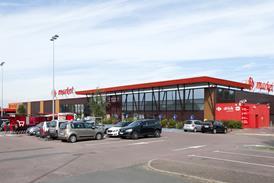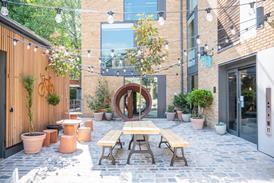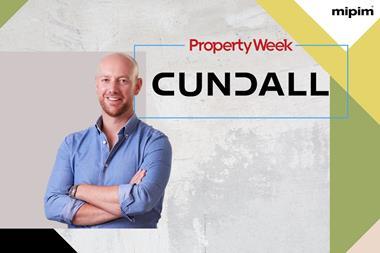Much like the Inuit are reputed to have 50 words for ‘snow’, so too does real estate often have a blizzard of terms that mean broadly the same thing – particularly when it comes to the relationships between us.

Landlords and tenants, owners and occupiers, customers, residents, end users, workers and more, all depending on how the company perceives itself and its role within that ecosystem. Some terms are considered by some to be outdated, such as ‘tenants’ amid what some might consider as paternalism and the belief that we need to be more customer-centric.
And, indeed, that’s how real estate is evolving in the post-pandemic world: to be customer-centric, to provide products and services rather than bricks and mortar. Given our love of jargon, it’s almost surprising that property as a service (PaaS) hasn’t yet taken a hold of the imagination.
A property industry that is increasingly service-led is both inevitable and inevitably good. It will deliver much better outcomes for every party, including the owners formerly known as landlords whose valuations will be higher as a result. Customer centrism, then, is on the rise and we’re better off for it.
But it can’t stop there. It’s essential that if the sector is to truly provide the best-quality products to customers – and the best services – it must embed social value in its supply chains.
Given the rise of social impact and social value – the often under-looked ‘S’ in environmental, social and governance (ESG) – conversations on what the industry needs to address will increase.
Real estate is fortunate in many ways. Because of the tangible impact on the communities around assets, it can clearly see what it is doing right and where it is missing the mark. It has a huge opportunity to lead the way on social impact and show the rest of the economy how to deliver profit and purpose.
And while it’s important to address the communities around assets, it’s equally as important to develop the communities that make our assets possible.
That’s why, at our sites in Watford (residential-for-sale homes at The Clarendon and grade-A office building The Clarendon Works) and in Wembley (residential-led Fulton & Fifth), we’ve set up the Regal London Real Estate Academy. The academy equips its participants with a range of skills over the five-week course, working alongside our charity partner Building Heroes to deliver the programme to military veterans and disadvantaged and underrepresented groups. Much more than just skills and qualifications, it equips participants with confidence and increases sense of self-esteem.
We run initiatives like the academy, in part because it’s part of our social sustainability strategy. But a significant part of why is because, in fact, we believe it’s good business. Talking bricks and mortar no longer sells (or lets) bricks and mortar. Occupiers want impact.
The days in which floorspace and rents were the biggest consideration are long gone. Talking points today are the benefits the building offers – is it BREEAM ‘Excellent’, EPC ‘A’ and WELL ‘Platinum’?
Occupiers (or whatever you might want to call them) increasingly have their own ESG requirements to fulfil. While that’s particularly true on the environmental side, it is expected soon to be much more the case on the social and governance side too. Future employees will want to know how their workplace has made an impact. It’s what our partners want, and it’s what our supply chains need.
In the words of one of our most recent graduates at our academy: “It’s opened my eyes to what else is achievable.” We in the built environment can change lives: we’re choosing to do it proactively and we’re confident others will follow.
Ghislaine Halpenny is director of ESG and corporate affairs at Regal London































No comments yet